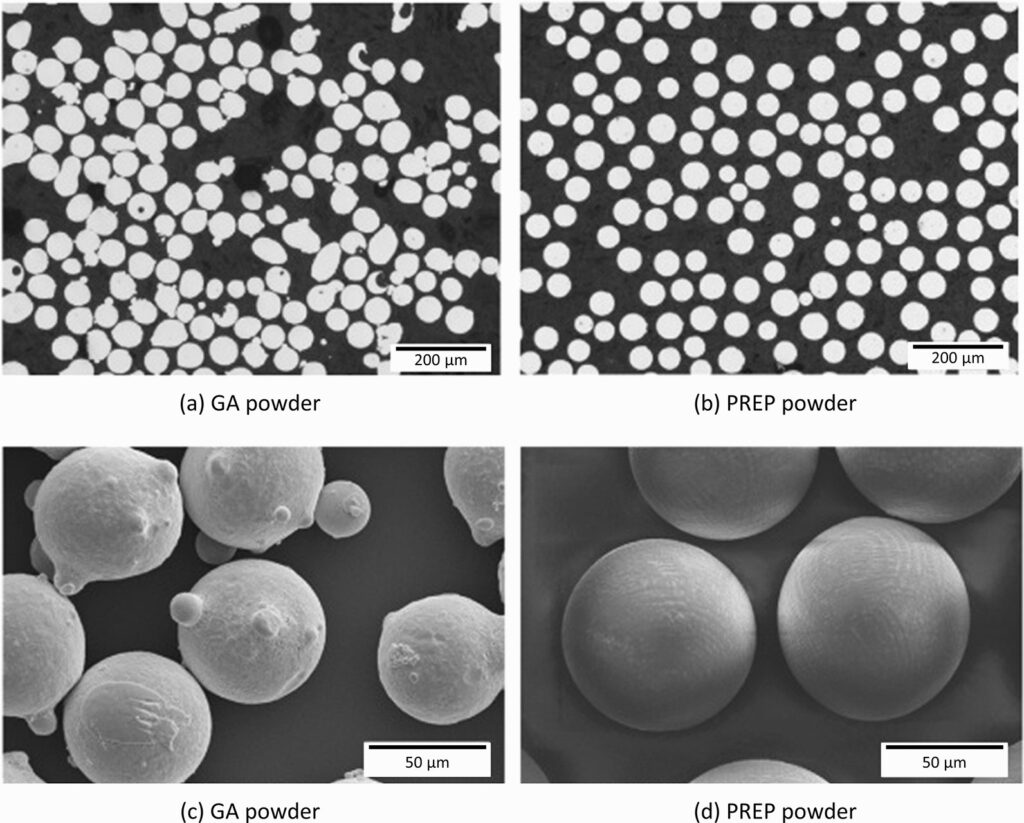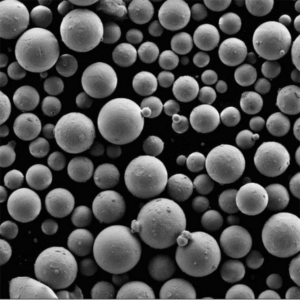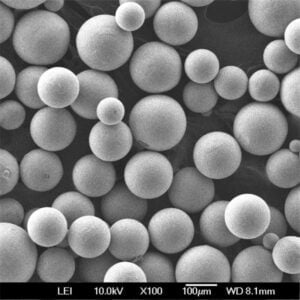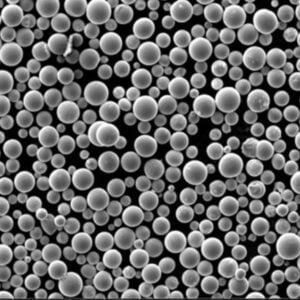
Spherical Haynes 230 Powder: Unmatched High-Performance Alloy
Low MOQ
Provide low minimum order quantity to meet different needs.
OEM & ODM
Provide customized products and design services to meet unique customer needs.
Adequate Stock
Ensure fast order processing and provide reliable and efficient service.
Customer Satisfaction
Provide high quality products with customer satisfaction at the core.
share this article
Table of Contents
Overview of Spherical Haynes 230 Powder
When it comes to materials that can withstand the most demanding environments, Spherical Haynes 230 Powder is a top-tier choice. This advanced superalloy powder, derived from Haynes 230, is designed for extreme applications where high-temperature strength, oxidation resistance, and long-term stability are critical. Whether you’re working on jet engines, gas turbines, or 3D-printed aerospace components, this material provides unmatched reliability.
So, what makes Spherical Haynes 230 Powder so exceptional? It’s all about composition and geometry. The spherical shape of the powder allows for better flowability, packing density, and uniformity in additive manufacturing processes like selective laser melting (SLM) and electron beam melting (EBM). As a cobalt-nickel-based alloy with precise elemental control, it not only excels at high temperatures but also resists oxidation, carburization, and nitridation, making it a go-to material for harsh environments.
In this guide, we’ll dive deep into the types, composition, properties, applications, and specifications of spherical Haynes 230 powder. We’ll also compare its advantages and limitations, provide supplier and pricing details, and answer frequently asked questions. Let’s get started!
Types, Composition, and Properties of Spherical Haynes 230 Powder
Types of Spherical Haynes 230 Powder
Spherical Haynes 230 Powder comes in different grades and sizes tailored to specific applications, especially in additive manufacturing and thermal processes. Here’s a quick breakdown of its types:
| Type | Description |
|---|---|
| Standard Spherical Powder | Ideal for general additive manufacturing and coating applications. |
| High-Purity Spherical Powder | Features enhanced purity to minimize contamination in sensitive aerospace and medical applications. |
| Fine Particle Grade | Ultra-fine particle sizes (<20 µm) for precision applications like micro-components and coatings. |
| Coarse Particle Grade | Larger particle sizes (50-100 µm) for high-strength casting and thermal spraying. |
| Modified Spherical Powder | Surface-treated powders for improved compatibility with specific processes or materials. |
Composition of Spherical Haynes 230 Powder
The secret to Haynes 230’s performance lies in its carefully balanced cobalt-nickel-based composition, designed to provide strength, corrosion resistance, and stability at elevated temperatures. Below is the typical composition:
| Element | Weight Percentage | Role in the Alloy |
|---|---|---|
| Cobalt (Co) | Base | Ensures high-temperature strength and oxidation resistance. |
| Nickel (Ni) | 22.0% | Improves thermal stability and resistance to carburization. |
| Chromium (Cr) | 22.0% | Provides oxidation and corrosion resistance. |
| Molybdenum (Mo) | 2.0% | Enhances creep resistance and strength at elevated temperatures. |
| Tungsten (W) | 14.0% | Increases hardness and high-temperature performance. |
| Iron (Fe) | <3.0% | Maintains structural stability without compromising strength. |
| Carbon (C) | 0.08-0.12% | Improves creep strength and durability. |
| Silicon (Si) | <0.50% | Enhances oxidation resistance. |
| Manganese (Mn) | <0.50% | Adds to the alloy’s toughness and wear resistance. |
This composition ensures that Haynes 230 maintains its structural integrity and mechanical properties even under extreme thermal and chemical conditions.
Key Properties of Spherical Haynes 230 Powder
What makes spherical Haynes 230 powder stand out in the world of superalloys? Its properties are engineered to deliver top-notch performance in the most extreme environments. Let’s take a closer look:
| Property | Details |
|---|---|
| High-Temperature Strength | Retains mechanical strength at temperatures exceeding 980°C (1800°F). |
| Oxidation Resistance | Resists oxidation up to 1150°C (2100°F), making it ideal for gas turbines and heat exchangers. |
| Thermal Stability | Minimal creep deformation under high thermal loads. |
| Corrosion Resistance | Excellent resistance to carburization, nitridation, and sulfidation in harsh environments. |
| Flowability | Spherical morphology ensures superior flow in additive manufacturing processes. |
| Density | ~8.7 g/cm³, offering a balance between strength and weight. |
| Weldability | Performs well in welding and joining applications without cracking. |
Applications of Spherical Haynes 230 Powder
The versatility of spherical Haynes 230 powder makes it indispensable across a wide range of industries. From aerospace to power generation, its unique properties ensure optimal performance in demanding applications.
Key Applications of Spherical Haynes 230 Powder
| Industry | Application |
|---|---|
| Aerospace | Jet engine components, turbine blades, and combustion liners for high-temperature environments. |
| Power Generation | Gas turbine combustors, heat shields, and hot section parts for power plants. |
| Additive Manufacturing | 3D printing of complex, high-strength components for lightweight aerospace and industrial parts. |
| Chemical Processing | Reactors, heat exchangers, and furnaces exposed to corrosive chemicals and high heat. |
| Automotive | Exhaust components, turbochargers, and other parts requiring high heat and corrosion resistance. |
Example: Aerospace Applications
In the aerospace industry, components face extreme temperatures, stress, and oxidation. Spherical Haynes 230 powder is used to manufacture combustion liners, turbine blades, and exhaust systems, where traditional materials fail. Its ability to resist oxidation and maintain mechanical properties at high temperatures makes it a go-to choice for jet engines and gas turbines.
Specifications, Sizes, and Standards for Spherical Haynes 230 Powder
When selecting spherical Haynes 230 powder, having the right specifications is crucial. Below are the details regarding sizes, grades, and compliance standards.
Specifications and Sizes of Spherical Haynes 230 Powder
| Specification | Details |
|---|---|
| Particle Size Range | Available in <20 µm (fine), 20-45 µm (medium), and 45-100 µm (coarse). |
| Purity Levels | Standard grades at ≥99%; high-purity grades available for critical applications. |
| Shape | Spherical morphology for optimal flowability and material uniformity. |
| Compliance Standards | Meets ISO, ASTM, and AMS standards for aerospace and industrial applications. |
Suppliers and Pricing for Spherical Haynes 230 Powder
The market for spherical Haynes 230 powder is competitive, with suppliers offering tailored solutions for different industries. Pricing primarily depends on factors like particle size, purity, and order volume.
Supplier and Pricing Information for Spherical Haynes 230 Powder
| Supplier | Region | Price Range (per kg) | Specialization |
|---|---|---|---|
| Advanced Alloys Inc. | USA | $800 – $1,500 | High-purity Haynes 230 for aerospace and additive manufacturing. |
| Global Powder Tech | Europe | $900 – $1,800 | Custom powder sizes for 3D printing and coatings. |
| MetalTech Solutions | Asia | $700 – $1,200 | Bulk orders for industrial and automotive applications. |
| Prime Alloy Suppliers | Global | $850 – $1,600 | Specialized powders for gas turbines and heat exchangers. |
Advantages and Limitations of Spherical Haynes 230 Powder
No material is perfect, and while spherical Haynes 230 powder excels in many areas, it’s important to understand its limitations.
Advantages of Spherical Haynes 230 Powder
| Advantage | Description |
|---|---|
| High-Temperature Strength | Retains strength and stability far beyond the limits of most materials. |
| Oxidation Resistance | Superior resistance to high-temperature oxidation compared to standard alloys. |
| Versatile Applications | Suitable for additive manufacturing, coatings, and traditional casting methods. |
| Durability | Long lifespan in harsh environments, reducing maintenance costs. |
Limitations of Spherical Haynes 230 Powder
| Limitation | Description |
|---|---|
| High Cost | More expensive than traditional materials due to its specialized properties. |
| Processing Challenges | Requires advanced equipment for optimal use in additive manufacturing. |
| Limited Availability | Custom grades may have longer lead times due to complex production processes. |
Frequently Asked Questions (FAQ) About Spherical Haynes 230 Powder
| Question | Answer |
|---|---|
| What is spherical Haynes 230 powder used for? | It’s used in aerospace, power generation, and chemical processing for high-temperature components. |
| What makes it different from traditional materials? | Its high-temperature strength, oxidation resistance, and spherical morphology set it apart. |
| How much does it cost? | Prices range between $700 and $1,800 per kilogram, depending on specifications. |
| Is it suitable for 3D printing? | Yes, its spherical shape and flowability make it ideal for additive manufacturing. |
| Does it meet industry standards? | Yes, it complies with ISO, ASTM, and AMS standards for various industries. |
Conclusion
Spherical Haynes 230 Powder is more than just a material—it’s a solution to some of the toughest challenges in engineering and manufacturing. With its high-temperature strength, oxidation resistance, and spherical morphology, it’s a top choice for industries like aerospace, power generation, and additive manufacturing. Whether you’re building jet engines or 3D printing complex components, this powder delivers exceptional performance and reliability. Ready to tackle extreme environments? Choose Haynes 230 Powder and see the difference!
Get Latest Price
About Met3DP
Product Category
HOT SALE
CONTACT US
Any questions? Send us message now! We’ll serve your request with a whole team after receiving your message.

Metal Powders for 3D Printing and Additive Manufacturing
COMPANY
PRODUCT
cONTACT INFO
- Qingdao City, Shandong, China
- [email protected]
- [email protected]
- +86 19116340731








